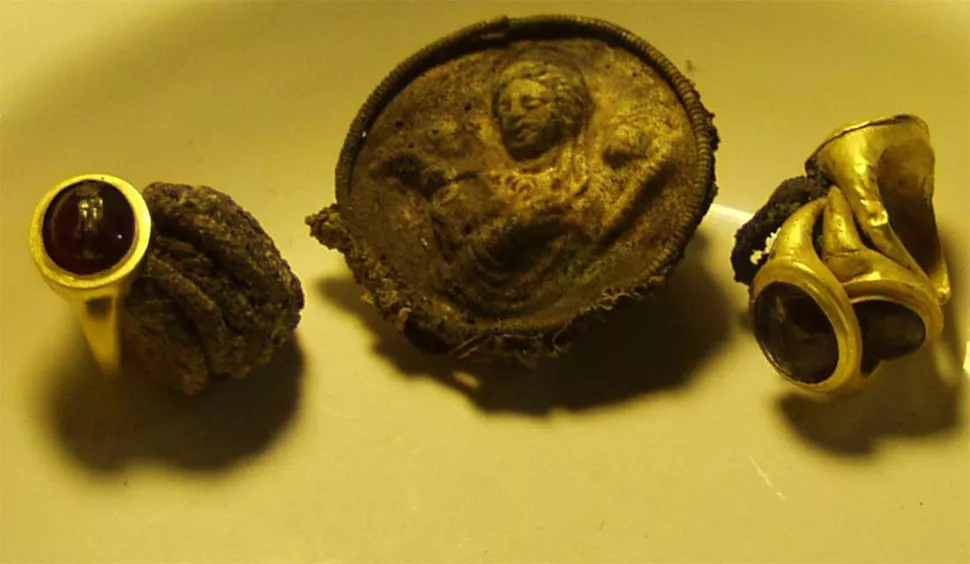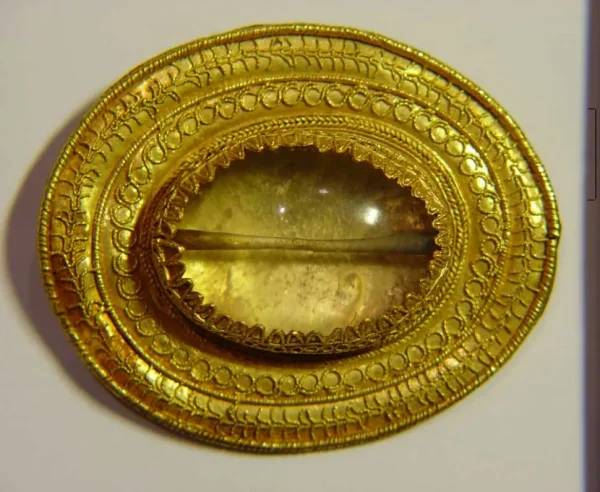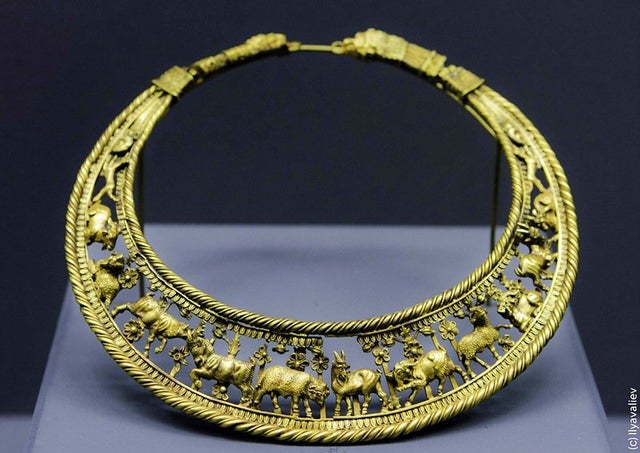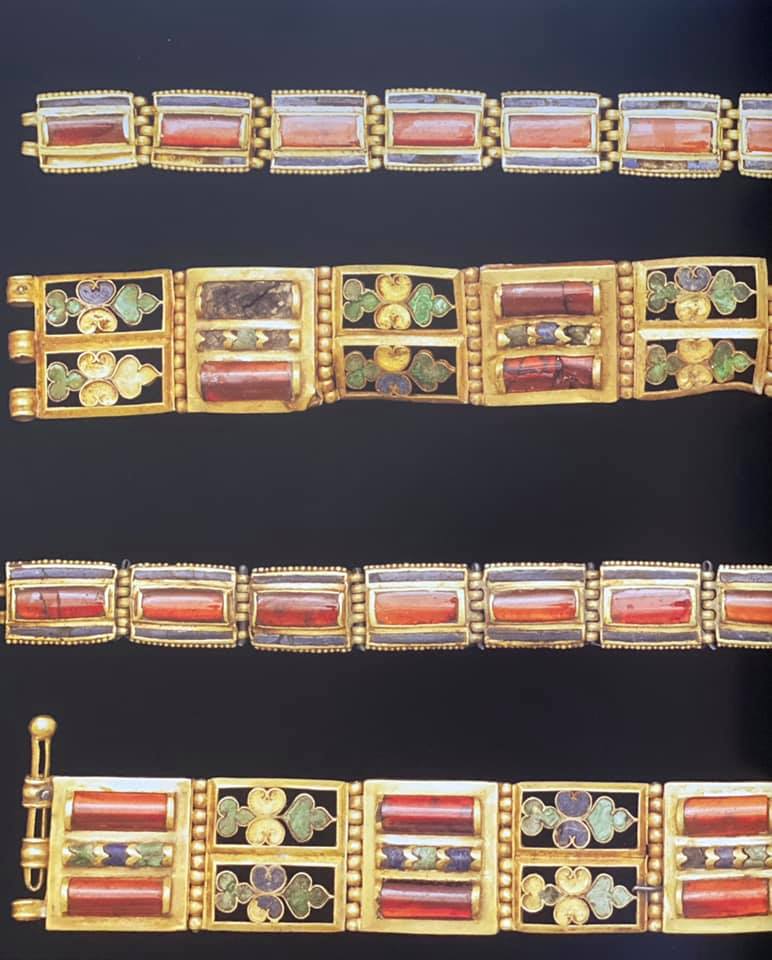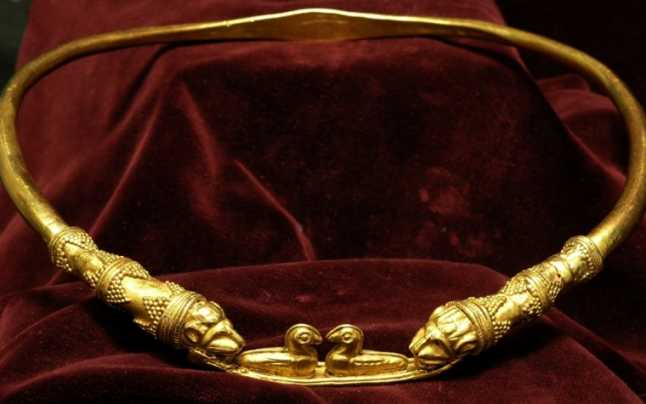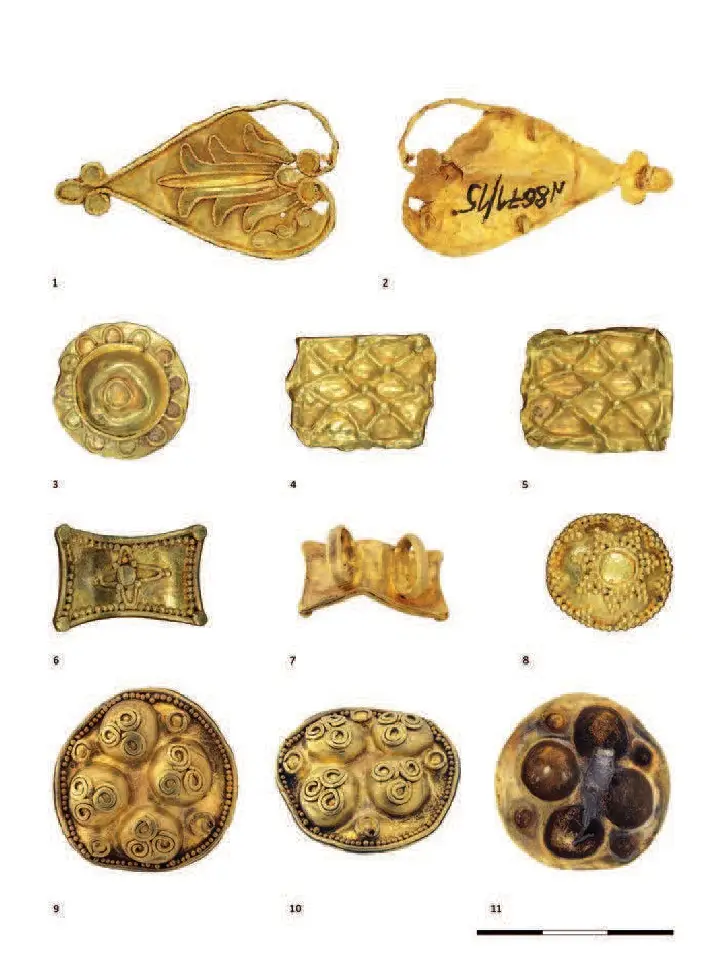The exhibition “Matrona’s Box. Jewels of the Roman Era from the Collection of the State Hermitage.”
The exhibition featured earrings, bracelets and necklaces worn by ladies of that time.
All items on display were found in burials, some of them still show traces of being in the ground. At one time, products were found in different parts of the planet. Some are on the territory of modern Turkey, others are in the Crimea, and others are in Ukraine. Later they ended up in the private collections of statesmen, entrepreneurs and antique dealers. And then – to the State Hermitage.
“It is known that in the Roman era there were 17 varieties of earrings, and they really differed from each other: in design, in decor and other details,” Olga Gorskaya emphasized. [source]
Medallions are interesting, especially with the face of Medusa the Gorgon. Such a medallion was considered the strongest amulet, because the Gorgon turned her enemies into stone at a glance. It is worthwhile to carefully discern the medallion with Venus and the baby Eros – he clung to his mother, like a baby to the Madonna, a very characteristic pose.
“Armlets and wrist bracelets in the shape of a snake were also amulets,” says Natalya Levdanskaya. – Snakes were mysterious animals, they were worshiped, feared, believed in their ability to influence the fate of man. Such decorations protected the hostess from the evil eye and witchcraft. [source]

©Anastasia Dobrovolskaya 













| Пара серёг с треугольными подвесками. II в. н. э. Северное Причерноморье. Золото, бронза, гранаты-альмандины, бирюза; ковка, пайка, филигрань, зернь, инкрустация, шлифовка, полировка |
Pair of earrings with triangular pendants. 2nd century CE Northern Black Sea region. Gold, bronze, almandine garnets, turquoise; forging, soldering, filigree, granulating, inlaying, grinding, polishing.

| Ажурный перстень. II в. н. э. Северное Причерноморье. Золото, гранаты-альмандины, бирюза; ковка, пайка, филигрань, зернь, инкрустация, шлифовка, полировка |
Openwork ring. 2nd century, Northern Black Sea region. Gold, almandine garnets, turquoise; forging, soldering, filigree, granulating, inlaying, grinding, polishing.

| Ожерелье в виде цепочки с медальном из четырех гранатов. I – II в. н. э.; окончание – VI в. до н.э. Северное Причерноморье. Золото, гранаты-альмандины; ковка, пайка, филигрань, зернь, инкрустация, резьба, шлифовка, полировка |
Necklace in the form of a chain with the four garnets. 1st-2nd century CE; ending – 4th century BCE.
Northern Black Sea region. Gold, almandine garnets; forging, soldering, filigree, granulating, inlaying, carving, grinding, polishing
Intaglio with Athena (?)

Gold and glass necklace, probably from Kerch, dated to the 1st century.
SMH Moscow inv. no. Оп.Б 56/41
Reminiscence of Greek farewell necklaces with a butterfly.

| Браслет из крученной спиралью толстой проволоки с застёжкой в виде змеиных голов. I в. н.э. Египет, Александрия. Золото; ковка, пайка, тиснение, шлифовка, полировка |
A bracelet made of thick wire twisted in a spiral with a clasp in the form of snake heads. 1st century Egypt, Alexandria. Gold; forging, soldering, embossing, grinding, polishing.
Similar bracelet was found in Pompeii.
SOURCES:
Драгоценности римской эпохи из собрания Эрмитажа представят в Приморье [link]
Римские украшения уже во Владивостоке [link]
https://catalogmineralov.ru/news_vo_vladivostoke_otkryilas_vyistavka_ukrasheniy.html
http://www.museum.ru/N73279
Ольга Горская – хранитель коллекции античных ювелирных изделий из частных собраний Отдела античного мира Государственного Эрмитажа >> https://www.fondpotanin.ru
https://www.vl.ru/afisha/vladivostok/event/116650
SMH Moscow https://shm.ru/shows/6929/

